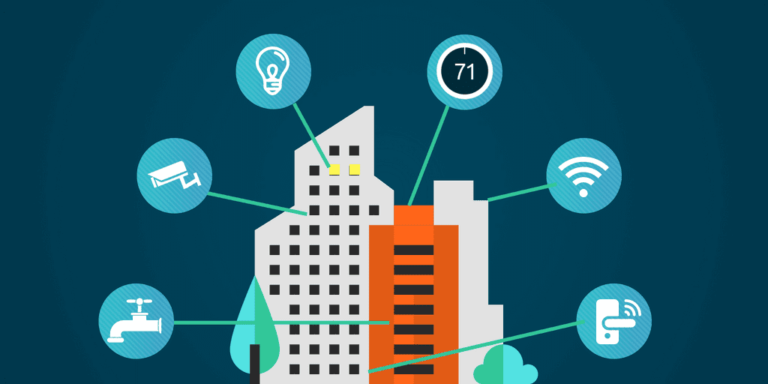
If you want to learn about building automation system basics – to find out what they control, what their benefits are, and how to install these systems in your facility – this article is for you. Buildings have become increasingly complex in recent years. All of the systems that make commercial buildings comfortable and useful, including the lighting, HVAC, elevator access, security systems, and even the Internet access, are controlled by a building automation system. Understanding the basics of how building automation systems function is the key to effective building operations.
How do building automation systems work?
Building automation systems (BAS) monitor and control all of the electrical, mechanical, and electrical systems in facilities. Information provided by occupancy sensors, RFID scanners, motion detectors, and other smart components is used to automatically adjust operations, improving performance and reducing energy waste. The main building systems regulated by building automation systems include:
- Electrical – Utility monitoring and energy management features help the building systems operate at peak efficiency.
- Lighting – Occupancy sensors and scheduling features are used to turn lighting systems on and off as needed in the building. Outdoor lighting in parking lots can be regulated by day/night controls or scheduling. Turning off lighting when unneeded can reduce energy costs by as much as 30 percent.
- Temperature – Heating and air conditioning (HVAC) systems are regulated using time and zone controls combined with occupancy sensors. This allows building owners to provide comfort while controlling costs.
- Air Quality Control – Sensors can monitor and adjust ventilation to remove CO2 and other dangerous gasses.
- Security – A building automation system integrates access control (elevators, escalators, entrances), CCTV cameras, and CCTV recording solutions, to prevent unwanted visitors from gaining access to the building and occupants.
What do building automation systems do?
Building automation systems serve four basic functions:
- Control the building environment – Building automation systems regulate temperature, lighting, humidity, and ventilation to keep occupants comfortable. Occupancy sensors and scheduling reduce energy waste by adjusting environmental systems when not needed.
- Monitor and control energy usage – Powerful software optimizes energy use, while sub-metering dashboards track and monitor tenant usage
- Monitor and correct system performance – Building automation systems make sure all the various systems are performing correctly, operating at peak performance for maximum efficiency. Sensors alert operators when preventative maintenance is needed.
- Provide security – The fire, access, and surveillance systems of the building are coordinated to ensure the safety of the building and occupants.
What are the benefits of an integrated building automation system?
When all of the control systems in a building are integrated into a seamless whole, the systems can share information and use it to work more efficiently. An integrated building automation system provides significant benefits for building owners and tenants, including:
- Improved tenant appeal –Tenants appreciate the comfortable, healthy environment and commercial appeal that comes from operating from a “green” building. Tenant retention and acquisition is improved creating a better bottom line.
- Lower operating costs – Buildings operate much more efficiently when all operations are integrated through a building automation system. Energy waste is reduced and performance is improved, resulting in lower operating costs.
- Remote access – Web-based control technology allows operators to control building operations through smartphones, tablets, and laptops from anywhere that has internet access.
Who can benefit from building management systems?
Building management systems can be used to improve the efficiency of virtually every size and type of building. While the greatest benefits can be realized in new buildings that incorporate building automation systems in their initial construction, existing structures that install building automation systems can significantly improve the efficiency of their building operations. Building automation systems can range from single, stand-alone systems to large building management solutions that control multiple buildings in larger facilities, such as university campuses or industrial complexes.
Learn more about the basics of Building Automation Systems in Fort Lauderdale, FL
Now that you have a better understanding of building automation system basics, it is time to start enjoying the benefits of smart building controls in your facility! The expert technicians at Advanced Control Corporation can design a customized building automation system for your new or existing structure that will transform the way you manage your building’s operations.
Contact Advanced today at 954-491-6660 to start enjoying the benefits that a building automation system can bring to your facility!

